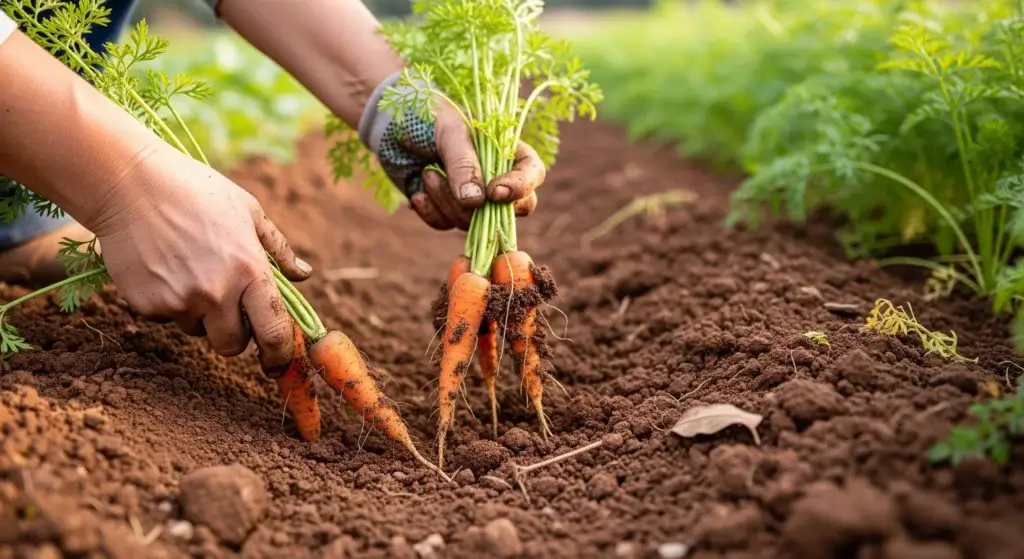
Welcome to the wonderful world of redcurrant cultivation!
In this comprehensive guide, we’ll walk you through everything you need to know to successfully grow redcurrants in your own backyard.
Redcurrant Varieties
There are many different varieties of redcurrants available, each with its own unique flavor, ripening time, and disease resistance.
Here are a few of the most popular varieties:
- Read also: Tips on How to grow Lemon balm
- Read also: How To Grow Brussels Sprouts
Red lake
This classic variety is beloved for its large, juicy berries and vigorous growth habit.
It’s an excellent all-around performer, suitable for fresh eating, baking, and preserving.
Red Lake is known for its high yields and disease resistance, making it a favorite among gardeners.
Rovada
If you’re looking for something a bit more unique, consider Rovada.
This Dutch variety boasts exceptionally long clusters of bright red berries that are perfect for making jams and jellies.
Rovada is also prized for its excellent flavor and resistance to powdery mildew.
Jonkheer van tets
Named after a Dutch nobleman, Jonkheer van Tets is prized for its early ripening and abundant crops of tart, flavorful berries.
This variety is ideal for cooler climates and is often chosen by gardeners who want to enjoy fresh redcurrants as soon as possible in the season.
Laxton
This heritage variety has stood the test of time, thanks to its robust growth and flavorful berries.
Laxton produces medium to large-sized fruits with a rich, tangy flavor that’s perfect for both fresh consumption and culinary uses.
It’s also known for its reliable yields and resistance to disease.
White versailles
This variety produces white berries with a sweet and mild flavor. It is a good choice for people who prefer a milder flavor.
Pink champagne
This variety produces pink berries with a sweet and tangy flavor. It is a good choice for people who want a unique and flavorful redcurrant.
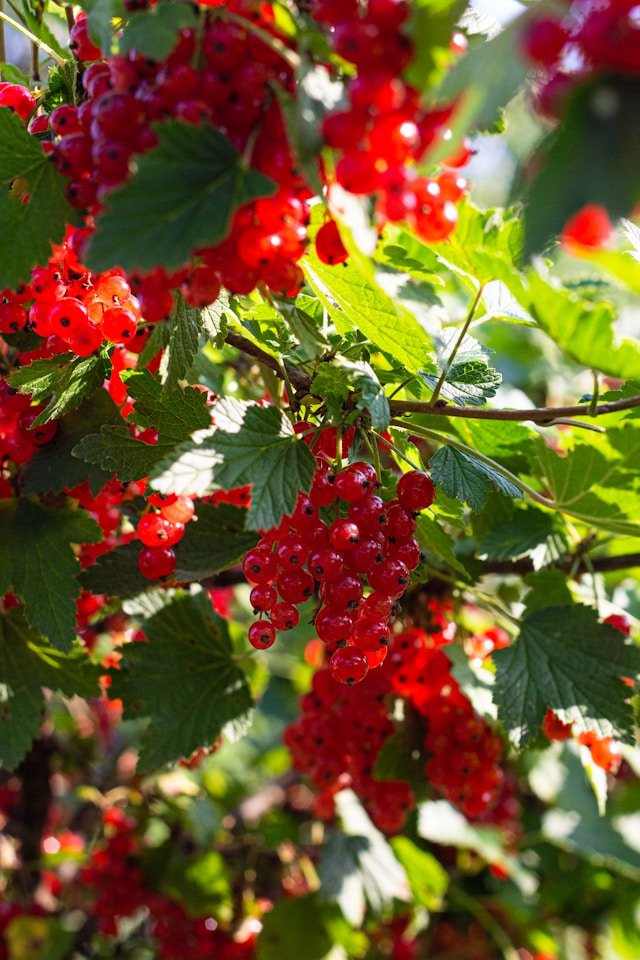
How to Choose Redcurrant Variety
Choosing the perfect redcurrant variety for your garden involves considering several important factors.
Let’s see these considerations to help you make an informed decision:
Climate compatibility
Redcurrants thrive in cooler climates with ample sunlight. However, some varieties are more tolerant of warmer temperatures than others.
Before selecting a variety, research its specific climate requirements to ensure it will thrive in your region.
Consider factors such as winter hardiness and heat tolerance.
Varieties bred for colder climates may struggle in warmer regions, while heat-tolerant varieties may wilt or produce inferior fruit in cooler areas.
Space availability
Assess the space available in your garden or planting area before selecting a redcurrant variety.
Some varieties are more compact and suitable for smaller spaces, while others may require more room to spread out.
If you have limited space, look for dwarf or compact varieties that can be grown in containers or small garden plots.
These varieties typically have a smaller mature size and can be trained to grow vertically to save space.
Flavor
Choose a variety that suits your taste.
Some varieties are prized for their sweetness and are ideal for fresh eating straight from the bush.
Other varieties have a more tart flavor profile and are better suited for culinary uses such as jams, jellies, sauces, and baking.
These varieties may retain their flavor and texture better when cooked or preserved.
Research and recommendations
Take the time to research different redcurrant varieties and read reviews from other gardeners and experts.
Look for recommendations from reputable sources such as gardening forums, university extension offices, and horticultural publications.
Consider visiting local nurseries or garden centers to see if they have any redcurrant varieties available and inquire about their recommendations based on your specific growing conditions and preferences.
Disease resistance
Some varieties are more resistant to common redcurrant diseases like mildew or leaf spot.
Consider your region’s common problems and opt for resistant varieties like Rovada.

When to Grow Redcurrant Plants
Plant redcurrant bushes depends on whether you’re dealing with bare-root or container-grown plants:
Bare-root redcurrants
Best time to plant is late autumn to early spring (November to March), during their dormant season.
This allows the roots to establish themselves before the plant puts on new growth in spring.
Container-grown redcurrants
Similar to bare-root plants, during their dormant season.
Alternative, while not ideal, container-grown plants can technically be planted any time of year as long as the ground isn’t frozen.
However, planting during the dormant season will still give them the best chance of establishing themselves successfully.
Timing is key when it comes to planting redcurrant bushes.
Ideally, planting them in the early spring or late fall cause the soil is moist and temperatures are mild. Here are some additional factors to consider:
Local climate
If you live in an area with mild winters, you may be able to plant bare-root redcurrants in late winter or early spring.
However, if you live in an area with cold winters, it’s best to plant them in the fall so they have time to establish themselves before the ground freezes.
Avoid planting during extreme heat or cold, as this can stress the plants and affect their growth.
Moist soil
Regardless of the season, ensure the soil is moist but not waterlogged.
Moist soil helps the plants establish their roots more easily.
The soil temperature should be consistently above 50°F (10°C) for at least a week before planting.
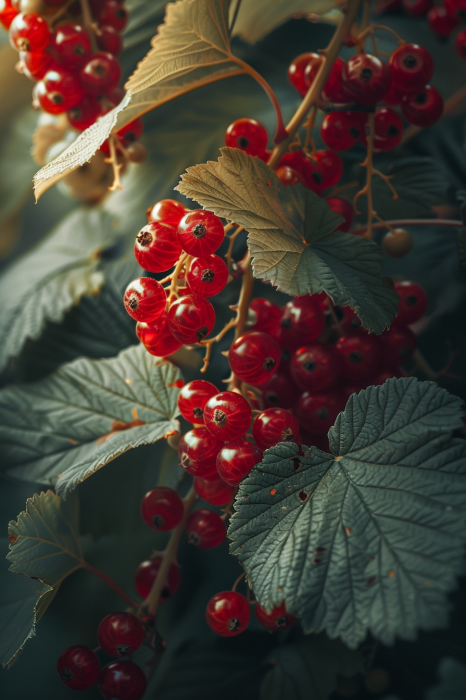
How to Get Redcurrant Plants
Purchase from a local nursery or garden center
The most convenient option and allows you to choose from various cultivars suited to your region.
Look for container-grown redcurrant plants which can be planted almost all year round (ideally November to March).
Ask the staff for recommendations on suitable varieties for your climate and preferences.
Order online from a reputable nursery or seed company
Wider variety options than local nurseries, especially for specialist varieties.
Choose between containerized plants or bare-root plants (available during the dormant season – November to March).
Ensure the company has a good reputation and ships healthy plants. Consider shipping costs and potential delays.
Propagate from an existing plant (if available)
Requires an existing healthy redcurrant bush to obtain cuttings or suckers.
Two common methods for redcurrant propagation:
Tip layering
- Bend a healthy branch down
- Bury the tip in the soil, and secure it.
- After rooting, sever the connection to the parent plant and transplant.
Hardwood cuttings
- Take dormant winter cuttings from young, healthy branches, plant them in a pot with well-draining soil, and keep them moist and cool until established.
- Takes longer than other methods but allows for free plants and ensures compatibility with your local conditions.
Obtain seeds from a reputable seed company
Least common method because germination can be slow and success rates are lower than other options.
Requires cold stratification (simulating winter conditions) before sowing.
Suitable for enthusiasts or for specific cultivars not readily available elsewhere.
How to Plant Redcurrants
Here’s a comprehensive guide on how to plant redcurrants, whether you’re using bare-root or container-grown plants:
Step 1: Preparation
Choose the right time
The ideal planting time depends on whether you have bare-root or container-grown plants:
- Bare-root redcurrants: Plant between November and March during their dormant season.
- Container-grown redcurrants: Ideally, plant between November and March, but technically can be planted any time the ground isn’t frozen. However, dormant season planting is still recommended.
Select a location
Choose a sunny spot with at least 6 hours of direct sunlight daily. Avoid low-lying areas prone to frost.
Prepare the soil
Redcurrants prefer well-drained, fertile soil with a pH between 6.0 and 7.5. If your soil is heavy clay or sandy, amend it with compost or manure to improve drainage and fertility.
Dig a hole twice the width of the root ball and just as deep.
Gather your tools
You’ll need a shovel, gardening gloves, compost or manure (optional), and a watering can.
Step 2: Planting
Bare-root plants
Soak the roots in water for several hours before planting.
Spread the roots out evenly in the planting hole.
Container-grown plants
Gently remove the plant from the pot, loosening any compacted roots.
For both types
- Position the plant in the hole, ensuring the crown (the point where the roots and stems meet) is just below the soil surface.
- Backfill the hole with soil, gently firming it around the plant base.
- Water the plant thoroughly until the water runs freely from the drainage holes (if planting in a pot) or soaks into the surrounding soil (if planting in the ground).
Mulch
Apply a 2-3 inch layer of organic mulch around the base of the plant, keeping it away from the stem to prevent rot. Choose materials like shredded bark, wood chips, or compost.
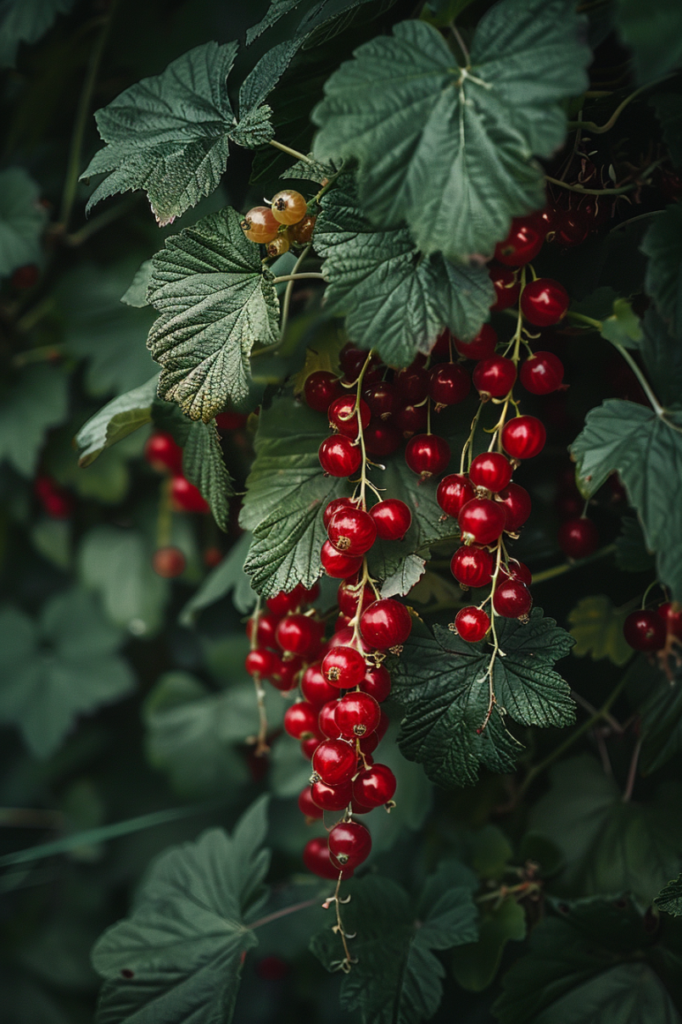
How Long Does It Take for Redcurrants to Bear Fruit
Redcurrants start bearing fruit around two to three years after planting. Redcurrants are usually bought as one-year-old plants that will fruit in the second year after planting.
Therefore, it takes about two years for redcurrants to bear fruit. although this can vary depending on various factors:
Planting method
- Bare-root plants: These typically start fruiting in the second year after planting, although it can take up to 5 years for full maturity and maximum yield.
- Container-grown plants: These might fruit slightly earlier in the second year due to being more established, but the difference is usually not significant.
Variety
Early-fruiting varieties like ‘Jonkheer van Tets’ and ‘Red Lake’ might start yielding a few berries in the first year, while others take the full two years.
Climate and growing conditions
Ideal sun exposure, well-drained soil, and proper care can all contribute to earlier fruiting. Conversely, poor growing conditions can delay fruit production.
Redcurrant Plant Care
Redcurrants are relatively easy to care for and require little maintenance apart from pruning, watering in dry spells, and feeding.
Here’s a comprehensive guide to redcurrant plant care:
Watering
- Young plants: Water regularly, especially during dry spells in the first year, to establish a strong root system. Aim to keep the soil consistently moist, but not waterlogged.
- Mature plants: Established redcurrants are more drought tolerant, but still benefit from regular watering during dry periods. Aim for 1-2 inches of water per week, adjusting based on rainfall and soil moisture.
Fertilizing
- Early spring: Apply a balanced organic fertilizer according to the package instructions. Some popular options are compost, aged manure, or fish emulsion.
- Over-fertilization: Avoid over-fertilizing as it can promote excessive foliage growth at the expense of fruit production.
Pruning
- Year after planting: Remove any shoots growing from the base of the plant to encourage strong, upright growth. Select 3-5 well-spaced, strong shoots and prune them back to 6-8 inches (15-20 cm) to encourage branching.
- Mature plants: Aim for annual pruning, ideally in late summer or early spring after harvest. Prune out:
- Dead, diseased, or damaged branches.
- Branches that are crossing or rubbing against each other.
- Older, less-productive branches to stimulate new growth. Aim to remove 1-2 older branches each year.
- Low-growing branches to improve air circulation and prevent fruit from touching the soil.
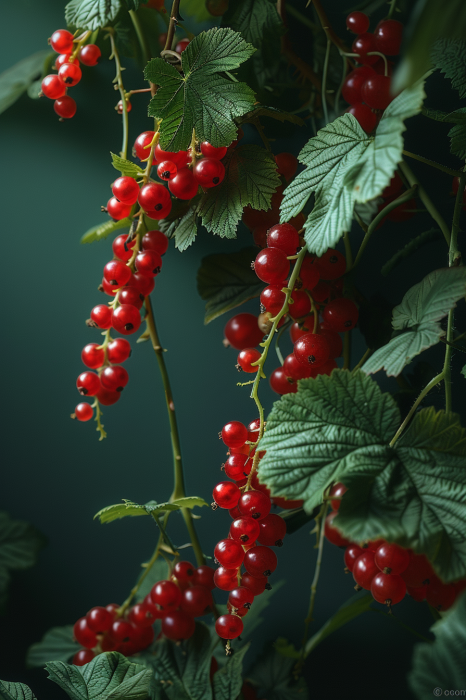
Pest and disease management
Redcurrant blister aphid
These small, green aphids feed on the undersides of leaves, causing them to curl and become distorted. They can also transmit diseases to the plant.
Management: For light infestations, a strong spray of water from the hose can dislodge the aphids. You can also use insecticidal soap or neem oil spray.
For heavier infestations, consider using a biological control agent, such as ladybugs or lacewings.
Currant sawfly
The larvae of this sawfly feed on the leaves of redcurrants, skeletonizing them.
Management: Handpick and destroy the larvae, or spray with insecticidal soap or neem oil.
Powdery mildew
This fungal disease appears as a white powdery coating on the leaves and shoots of the plant. It can reduce fruit production and stunt growth.
Management: Improve air circulation around the plants by pruning and thinning branches. You can also try using a fungicide containing sulfur or neem oil.
Anthracnose
This fungal disease causes small, brown spots on the leaves and fruit of redcurrants. The spots may ooze a pink liquid and eventually grow larger and merge.
Management: Rake up and remove fallen leaves and debris around the plants, as these can harbor the fungus.
You can also try using a fungicide containing copper, but this should only be used as a last resort as it can harm beneficial insects.
Tips for Additional Redcurrant Plant Care
- Mulching: Apply a 2-3 inch layer of organic mulch around the base of the plant (keeping it away from the stem) to help retain moisture, suppress weeds, and regulate soil temperature.
- Weed control: Regularly remove weeds around the plant to prevent competition for water and nutrients.
- Winter protection: If you live in an area with harsh winters, you can protect your young redcurrant bushes from frost with a layer of burlap or straw during the coldest months.
- Bird netting: Consider using bird netting to protect your ripening berries from birds.
- Supporting the bushes: As your redcurrants mature, consider providing support with a trellis or stakes, especially if they are growing against a wall or have heavy fruit loads.
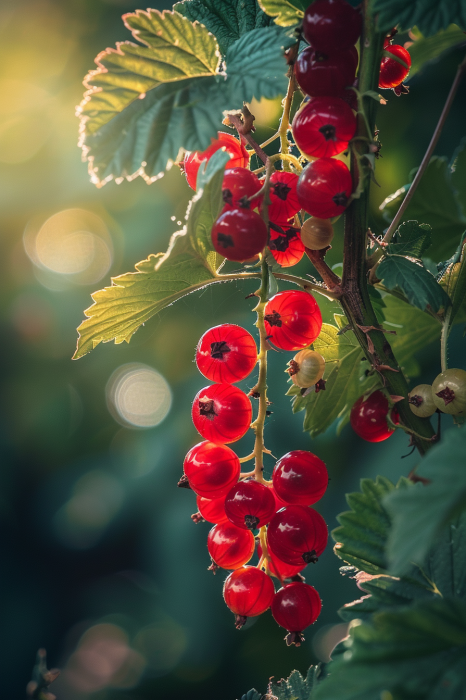
- Read also: How to Grow Quinces – A Guide to Successful Growth
- Read also: How To Grow Epiphyllum Cacti with Success
Conclusion
Growing redcurrants can be a fun and rewarding endeavor for gardeners of all skill levels.
By choosing the right variety, providing proper care and maintenance, and staying vigilant against pests and diseases, you can enjoy a bountiful harvest of delicious berries year after year.
FAQs
Yes, redcurrants can be grown in containers as long as they have enough room for root growth and receive adequate sunlight and water.
Redcurrant plants typically begin producing fruit 2-3 years after planting, with full production reached by the fourth or fifth year.
Redcurrants are usually ready for harvest in mid to late summer, when the berries are firm and fully colored. Simply grasp the stem and gently pull to remove the berries from the bush.

